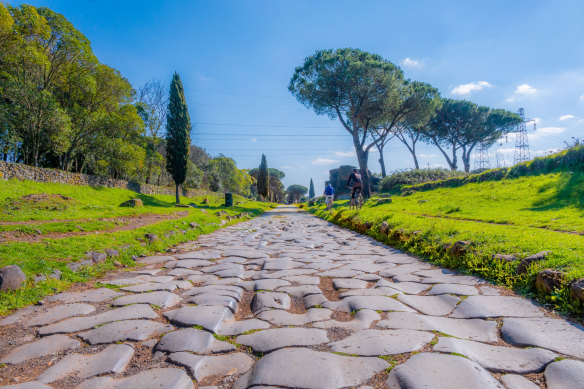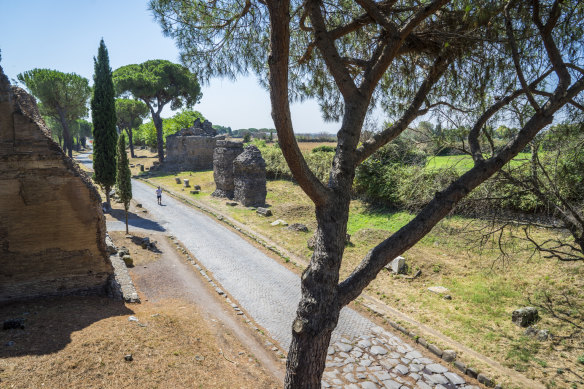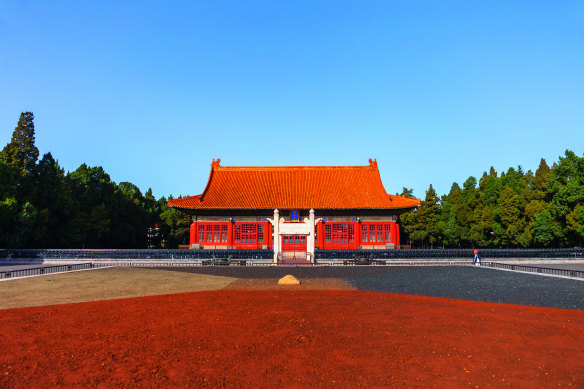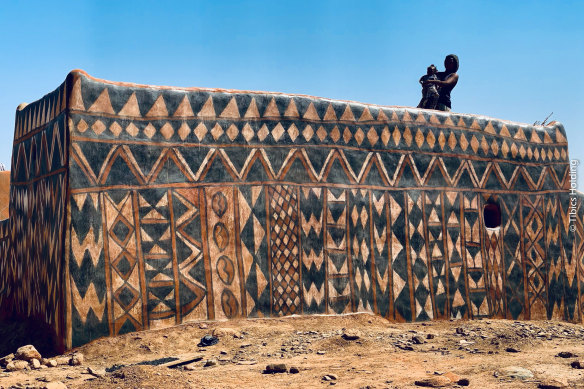The latest sites to join the renowned World Heritage list
The Appian Way Regional Park on the outskirts of Rome is home to a remarkably intact section of Italy’s Via Appia Antica (Appian Way), one of the world’s oldest surviving paved roads.

Appian Way … one of the world’s oldest surviving paved roads is now a protected site.Credit: Getty Images
But visitors to it may have been surprised to find out it was not World Heritage listed before August – such is the concentration of cultural riches of Italy, the whole place can seem like it should be listed.
However, the entire 800-kilometre-long Roman road, in many parts dating back as far as 312 BC, is one of 26 sites across the globe to have newly been given the protections and recognition of UNESCO at the recent 46th Session of the World Heritage Committee.

The 800-kilometre-long Roman road is one of the latest to given UNESCO status.Credit: Getty Images
This brings the total of World Heritage Listed sites to 1223 in 168 countries. Italy has 60 sites, the greatest number in the world.
World Heritage designations are made when places nominated by their home country are assessed and deemed of “outstanding universal value to humanity” and so, should be protected for future generations.
Not only does the inclusion mean the highest level of protection including technical and financial assistance, it also brings more attention, more tourism and hence, more employment and other associated advantages for their locales. It’s also a double-edged sword – there are myriad well-documented downsides.
But for now, it’s good news for the new inclusions, which comprise a fascinating variety of destinations. They run the gamut from city – Beijing’s Central Axis, consisting of former imperial palaces and gardens, sacrificial structures, and ceremonial and public buildings – to nature – the caves of Borneo’s Niah National Park.

The Altar of Land and Grain and the Worship Hall – part of Beijing’s Central Axis.Credit: Beijing Municipal Cultural Heritage Bureau
There are sites of contemporary history: the Nelson Mandela freedom sites of South Africa reflecting the country’s 20th century political struggles. And there are sites from more distant history, such as the Royal Court of Tiebele in the West African country, Burkina Faso, which dates to the 16th century. It’s a fascinating collection of buildings decorated by women reflecting stories of cultural significance, the knowledge of which is kept in secret by female guardians.
Tahiti’s Marquesa Islands are an off-the-beaten-track yet very accessible new World Heritage inclusion. With archaeology, ancient traditions and beautiful natural environment on offer, some boutique cruise companies, such as Paul Gauguin Cruises, can take you there.

The Quadrangular squares that form part of the 16th century Royal Court of Tiebele.
Australia currently has 20 World Heritage sites, including the Sydney Opera House and Uluru-Kata Tjuta. While there were none in the current year’s crop, there are eight Australian sites on the tentative list. These are places that will be put up for consideration at some point, with the propositions for their inclusion currently being worked on. These include an extension of the Gondwana Rainforests World Heritage Site, and the Flinders Ranges.
For the full 2024 list, see whc.unesco.org/en/newproperties
Sign up for the Traveller Deals newsletter
Get exclusive travel deals delivered straight to your inbox. Sign up now.